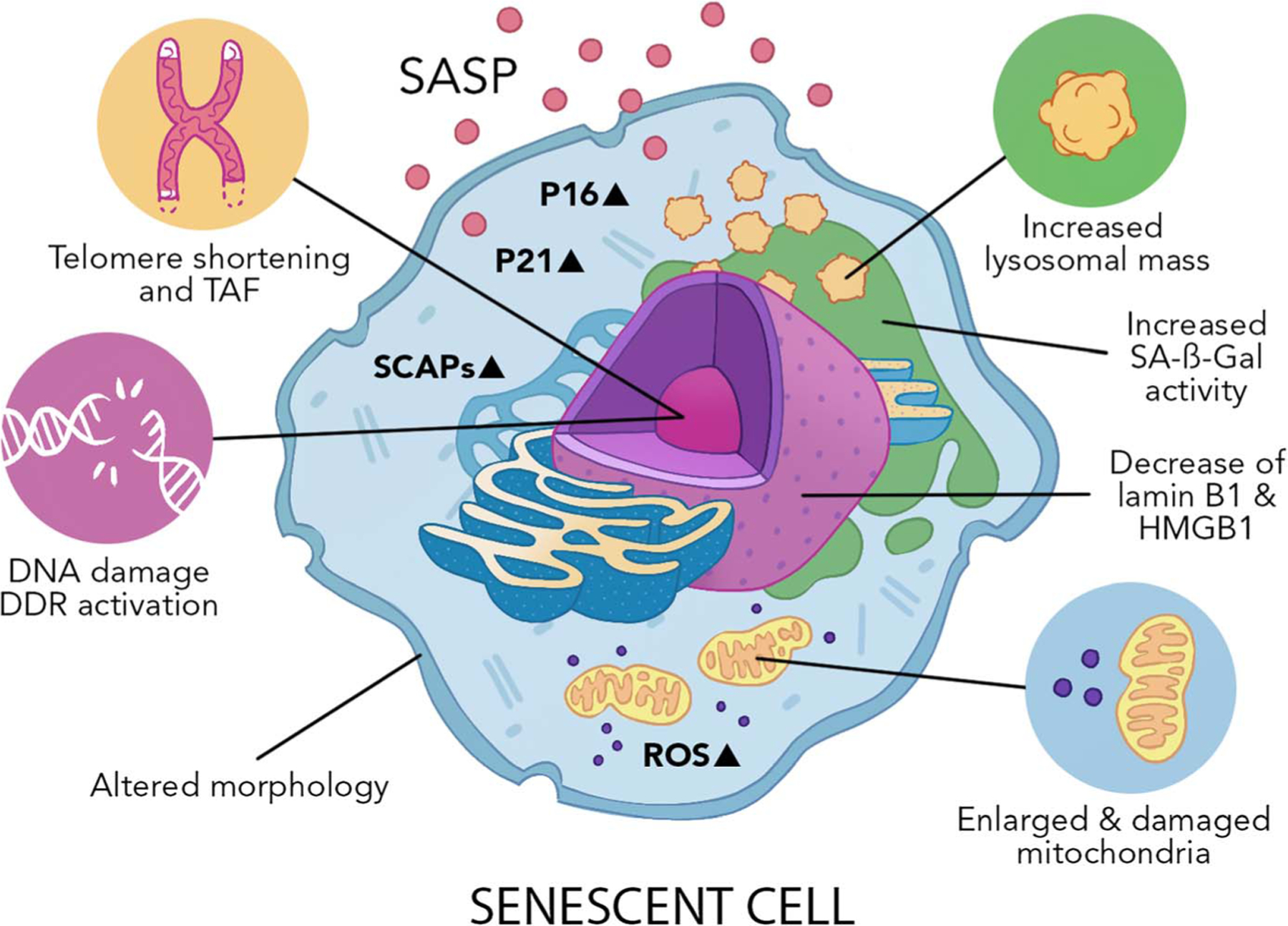Figure 1.

Hallmarks of senescent cells. Senescence is, fundamentally, a DNA damage response (DDR). DNA damage, telomere-associated DNA damage foci (TAF), and chromatin reorganization can be caused by several stressors, including mitochondrial dysfunction, excessive reactive oxygen species (ROS), inflammation, and exogenous triggers such as irradiation and genotoxic drugs. The DDR activates cyclin-dependent kinase inhibitors P21 and P16, ultimately leading to growth arrest. Established senescent cells will present an enlarged nucleus and aberrant cell morphology, accompanied by the loss of nuclear lamin B1 and HMGB1, high levels of lysosomal activity, and increased SA-β-gal activity. Senescent cells typically have a robust and heterogeneous bioactive secretome composed of proinflammatory cytokines and chemokines, growth factors, and matrix-modifying factors called the senescence-associated secretory phenotype (SASP). Another key feature of senescent cells is the upregulation of senescent cell antiapoptotic pathways (SCAPs), which confer their resistance to apoptosis.
